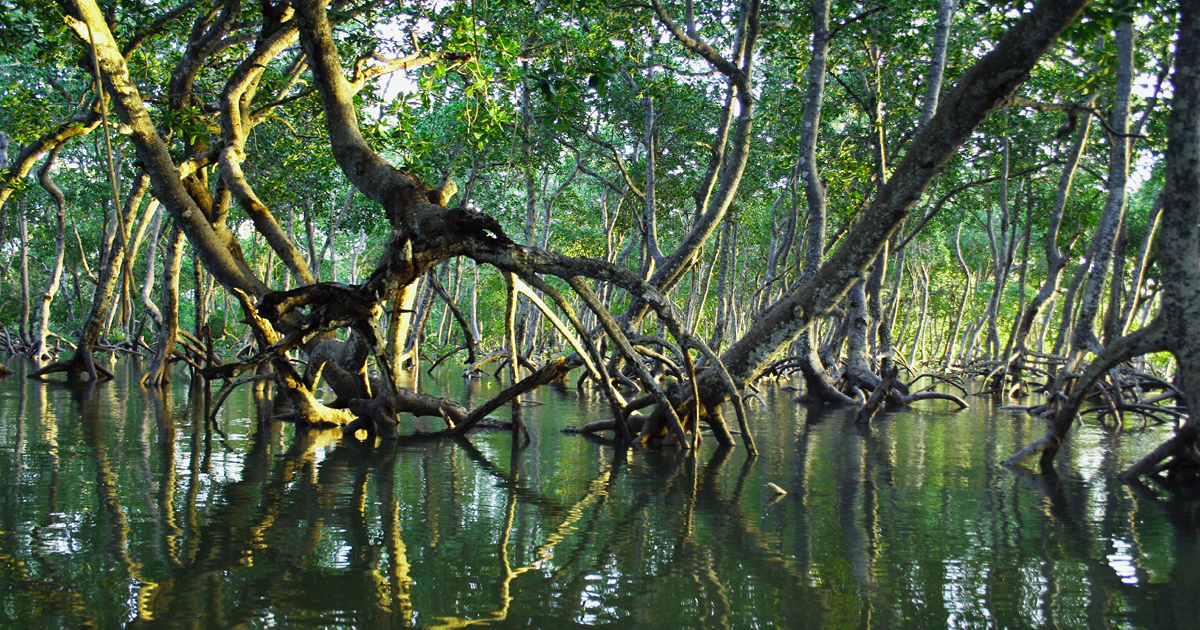As a technology copywriter, I get to see how cutting-edge innovations transform and improve the world. But some of the most exciting solutions I come across don’t rely on breakthroughs in smart fabrics or generative AI. Instead they rely on materials and processes that have been around for millennia.
Nature-based solutions use natural mechanisms to solve human challenges – in a way that reduces our destructive impact on the planet.
Here are just a few of my favourite use cases.
#1 Data centre cooling
As humanity generates, stores and analyses more and more data, we need more capable data centres. And keeping those data centres switched on, and cooled down, takes a huge amount of energy. In fact, data centres account for 1–1.5% of global electricity use.
The battle to stop our servers over-heating has sparked some especially neat technological innovations, most notably, liquid cooling. Running liquid past your circuit boards, and then letting it cool off at a safe distance uses less energy than air conditioning, reducing a data centre’s operational costs and emissions. But the technology still lacks standardisation, and requires large initial investment to implement.
So, what solution does nature offer?
About as far away from high-tech as you can get, free cooling solutions simply use the external atmosphere to keep servers at an acceptable temperature. They deliver far lower cooling costs and energy usage than any other option, but are only possible in the right environments.
One place that could be perfect for free cooling a data centre: under the sea.
Using the sea to cool data centres even provides an opportunity to power the servers with offshore wind and solar energy. And, much like wrecks, such data centres could provide valuable habitats for marine life – boosting biodiversity in the surrounding area.
Offshore, underwater data centres do, however, have drawbacks. In some cases, solar and wind energy may be the only viable source of power, as connecting to the onshore grid is very difficult. And a completely weather-dependent data centre isn’t ideal. And then there’s the challenge of performing maintenance…
#2 Urban pollution reduction
The global population is expected to pass nine billion by 2037. As populations increase, so does pollution – especially in urban areas.
One way to protect the health and wellbeing of city-dwellers is to stop pollution at its source (for example, through the transition from petrol and diesel to electric vehicles). Another is to actively remove pollutants from the atmosphere.
Electrostatic precipitators use static electricity to pull pollution particles from the air – and advances in nanotechnology are making the process more efficient. Electrochemical conversion, meanwhile, can pull CO2 out of the atmosphere, allowing the carbon to be repurposed as materials and fuels.
But nature has its own, tried-and-tested solution for capturing and converting CO2. And as well as processing carbon dioxide through photosynthesis, some plants even consume other urban pollutants.
Moss is a great example. Certain varieties naturally feed on common pollutants, removing them from the surrounding atmosphere – and providing a handy way to monitor pollution levels. Combining this natural process with choice technologies can yield even better results. Driving more air through the moss, for example, can increase the quantity of air purified, while solar-powered, IoT-connected irrigation systems can help to keep the moss healthy.
#3 Protecting coastal communities from climate change
The global average sea level is rising, and at the same time, climate hazards – like large storm surges – are becoming more frequent. This combination poses a huge threat to coastal communities. What’s more, creating appropriate hard structures to provide long-term protection is a complicated task because the rate of change is as unpredictable as it is unprecedented.
Again, nature offers some adaptable, sustainable answers. One that’s currently gaining popularity is planting .
Mangroves have a naturally tight root system that provides protection from large waves during storms while protecting the land from coastal erosion. They need enough space to grow, and the right environment to thrive, but where they’re a viable solution, mangroves also create a valuable new habitat for wildlife. This habitat can increase biodiversity, and even provide sustainable fishing opportunities for local communities.
Humans and nature are better together
As astonishing as humanity’s recent technological advances are, sometimes it can be incredibly beneficial to look away from our screens and machines, and out the window.
Nature may not have all the answers, but the ones it does offer have been stress-tested over timescales even the best-funded R&D team can only dream about. Combining natural mechanisms with our most exciting innovations could yet be the secret to shaping a sustainable future for us and our planet.


